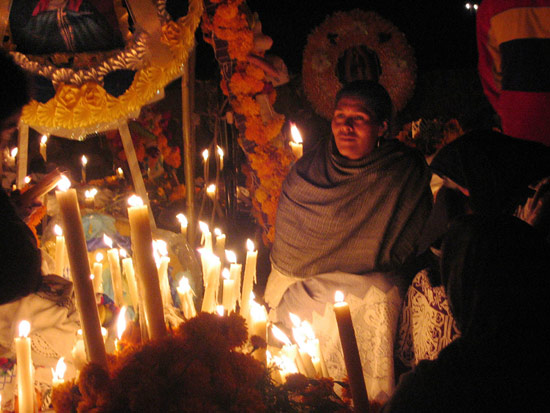Life Stages: Death
Ceremonial Remembrances
The Mexican culture views death as a solemn transition from one life to another. The various rituals regarded as essential for the peace of the deceased soul reflect a fusion of traditional (Aztec, Olmec, Toltec, and Mayan) and Catholic legacies.
After-death ceremonies, called the “deathwatch,” are typically conducted for three days, although the length is getting shorter nowadays. Ceremonies include veiling the body, an all-night wake, mourning rituals, and religious services. Relatives and guests bring food, drinks, and other gifts to pay homage to the deceased. Funerals usually take place at the burial ground where the body is interred or cremated. People accompany the body to the burial ground, where they recite ceremonial prayers and songs.
Cultural Beliefs and Practices
Mexicans believe that uncared for or ignored souls typically haunt and victimize the living, so there are popular cults of the dead, many ways to remember deceased loved ones, and ceremonies on death anniversaries. The Day of the Dead, or Dia de los Muertos, observances in Mexico take place from October 31 to November 2 every year. The spirits of dead children are invited back on All Hallows Eve (October 31), and children decorate altars for their dead counterparts with food, toys, photographs, tiny toy skeletons with deceased children’s names, and Pan de Los Muertos (bread of the dead). The pathway to altars in homes is decorated with lit candles.
Mexicans commemorate All Saints’ Day (November 1) and All Souls’ Day (November 2) to ask their ancestral spirits to revisit their living descendants. Larger altars are arranged in the homes including flowers, photographs, and offerings of food, beverages, and special objects (like skulls made of sugar or chocolate and crucifixes). Mexicans usually go to the church, conduct anniversary Masses, visit churchyards, place large orange flowers on the graves, and pray in memory of their loved ones.
A traditional feast of tamales and tortillas, ghost stories, death-theme dramas, official fireworks in the morning and afternoon, tolling church bells, and el baile de los esqueletos or “the dance of the skeletons” are also essential parts of death remembrances in the country. Before night falls, Mexicans light a candle at the graveside for each deceased relative and return to their homes.
Copyright © 1993—2024 World Trade Press. All rights reserved.

 Mexico
Mexico 
